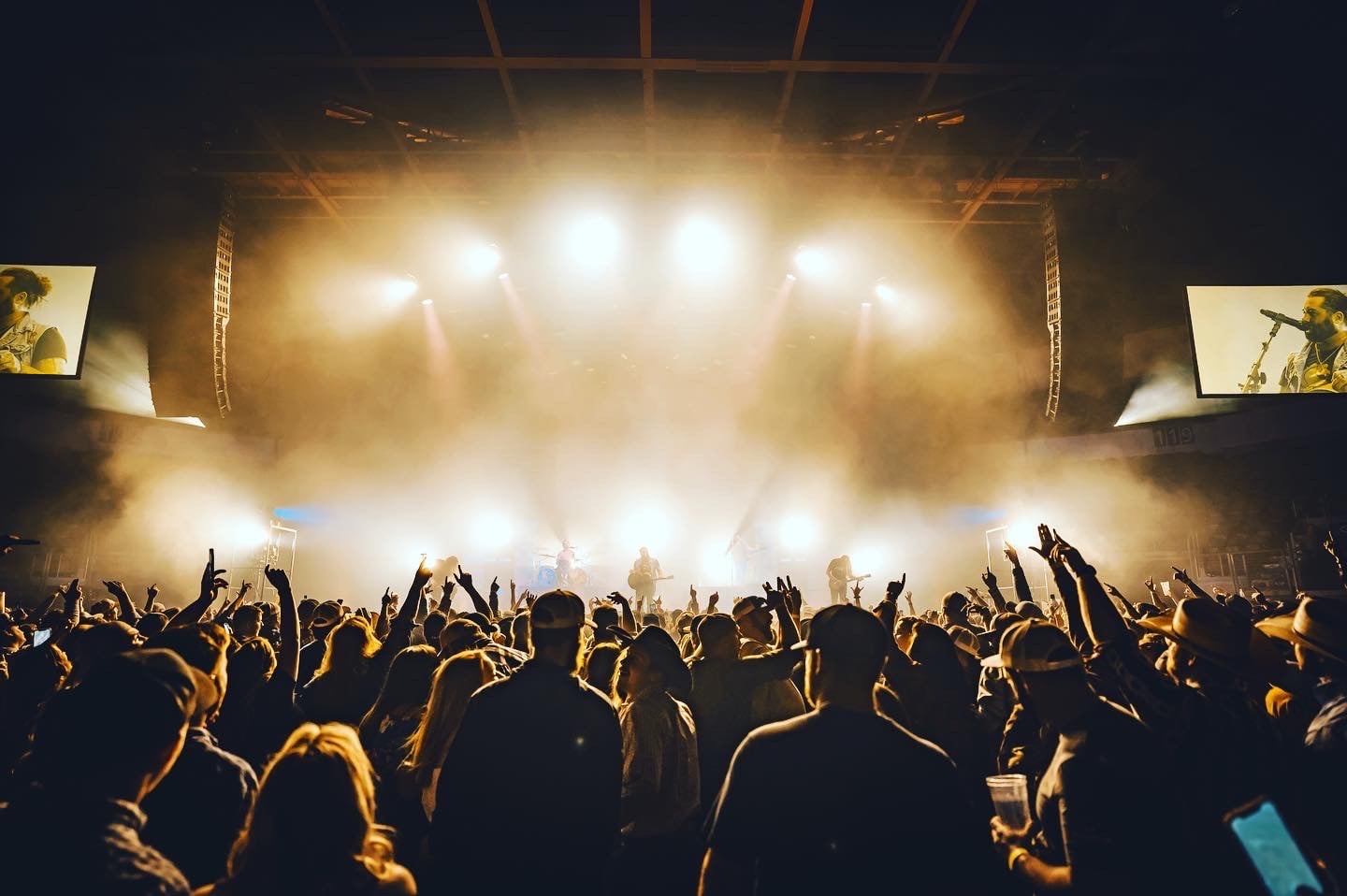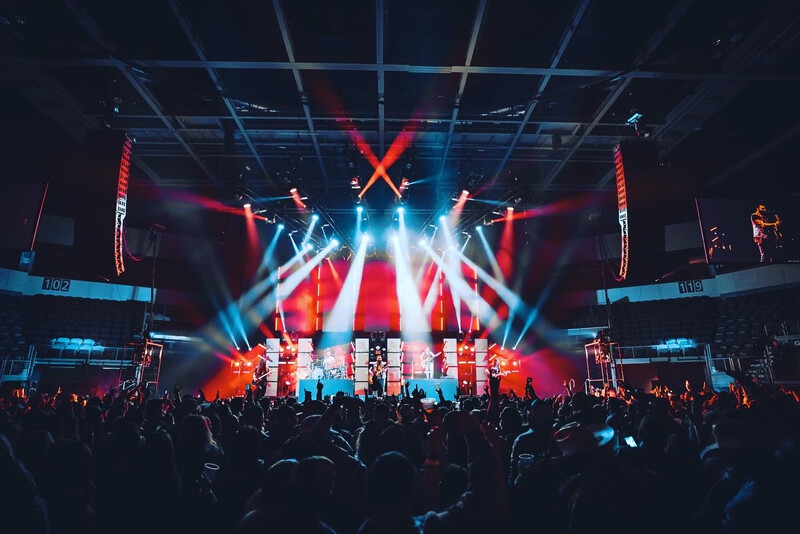Matthew PJ Row – Connecting To Crowds With Light
Posted on July 5, 2022
Those attending a Koe Wetzel show for the first time, might be forgiven if they think they happened upon a party rather than a concert. Such is the kind of close, family-like relationship between the rowdy, ever-popular country/rocker and his rabidly loyal fan base.
As lighting designer for the multi-gold recording artist, Matthew PJ Row is skilled at creating the kind of bold, fast-moving looks that keep the good times rolling. He’s also quite adept at supporting the rapport between Wetzel and his fans with a variety of audience lighting effects.
Impressed with his work, we caught up with Row to learn how he connects to the crowd with light.
Koe Wetzel has a great rapport with his fans, so how important is audience lighting is to your shows?
“Extremely important! Lighting the audience strengthens the connection between the artist and the crowd, making the show about much more than just seeing your favorite star. To me it creates a level of intimacy in the form of a one-on-one connection when you hit the crowd with blinders.”

There are, of course, different types of audience lighting. You can send light from a wash out into the crowd or send some beams. Throw lighting out into the crowd from behind the band… Do you have one type that you favor?
“My favorite is creating a silhouette of the artists with ground support blinders with nothing else on stage. Seeing the tungsten glow and the shape of each performer on stage is my favorite look.”
When do you decide to use audience lighting during a show?
“For big sing-along moments where the band drops out and only vocals shine through, I will use the upstage blinders. There are some moments in songs where the band will drop out and only vocals and acoustic guitar are active. At those moments, I might start the first half of the sing-along section with just ground cart lighting, then, when the second half builds in I will apply the upstage blinders.
“Once the song starts the build back in, I will lower the blinders to around 70-percent and cue up a white blast on my strobes. When the song builds in to a big hit I will throw both the blinders and strobes at 100-percent filling the whole arena with lighting and slow fade out after the hit.
“Other times, I’ll use audience lighting with big kick drum hits — odd-even hits where the song drops, and I am playing the lights to the drums. I might even paint a room with the same color as on stage. This allows a small venue to seem like it is that much larger.

“With high energy songs I like to light up the crowd with washes or spots using colors that create energy, such as reds, oranges, and yellows. With slower songs, I’ll go with washes from ground support carts zoomed to 100% to create another silhouette look of the artists shining through, while also lighting up the crowd. Another great is dual purpose lighting with tightly focused washes creating an X position, but at the same time being aimed out towards the crowd or upper ring of an arena.
How does audience lighting change a venue?
“It can make a small room seem larger, create more energy in a crowd, or set the mood of the audience. Some time ago I read a book called ‘The Emotion of Lighting.’ A lot of what I read back then just really stuck with a lot of what I do or incorporate into lighting. In a sense, timing and being intentional with what we do makes the show that much more impactful.
What kind of difference does color make on the impact of audience lighting?
“It can set the mood, tempo, emotion for the crowd and on stage as well. We all are visual and can sense emotion out of color. My main role is to make sure everything I do matches the emotion and tempo of each song.
“For the slower songs, I’ll wash the crowd in deep saturated blues, higher energy songs reds. In some songs where the whole crowd is jumping in tempo to the song, I will even use my spot fixtures in a random pan sweep in orange to light up the crowd in orange.

“I remember early on when trying different color schemes and it has always stuck with me, but sitting there acknowledging in the middle of the song that the colors just did not feel correct to me. They didn’t match what the song was speaking.
“I think being able to stop and make that cognitive thought that something doesn’t fit is a great humbling step, but it helps to make sure we are always matching every aspect of each song. The same goes for painting the crowd. It has to be intentional and used correctly to match what is on stage and in the crowd.”
What do you think bands feel about audience lighting?
“All the bands that I have worked with want it. They want to be able to engage and interact with the people who love and support what they do. In my career, I’ve had some artists explain, ‘We do a lot of crowd interactions, but not every time we want the crowd lit up.’ Others have given me setlists with their notes explaining when they want the crowd lit up, and then there is always the ‘use your best judgement’ approach!”
How do you avoid blinding the crowd?
“I do not avoid it. On the off chance when not touring I get to go to a concert. It is one of the things I enjoy most myself as a fan. Sometimes stopping in the moment singing to my favorite artists and just looking around the arena seeing everyone singing back to the artists on stage is a surreal moment for me.
“Situations where I guess you could say I don’t blind the crowd, would be in corporate or church environments where I don’t have blinders. I guess you could say in church I would cheat around the idea of blinding the crowd by having moving washes or spots in a 90 degree air position fading down slowly back to stage and sweeping over the crowd but the intensity not reaching full until back on stage to where the audience is barely lit up as they are sweeping downward not causing distractions during the song.”
What is the biggest mistake LDs make with audience lighting in your opinion?
Not being intentional or not having a fade time. It is one of my pet peeves. Randomly blinding the crowd, off tempo, or lighting the crowd up, especially during a slow song, and then the blinders just snap off without a fade time. When I was starting out, I always erred on the side of, unless you know it is for sure a moment to light up the crowd, don’t do it. There is nothing worse than lighting up a crowd for no reason and then slowly walking the fader of shame back to zero.”